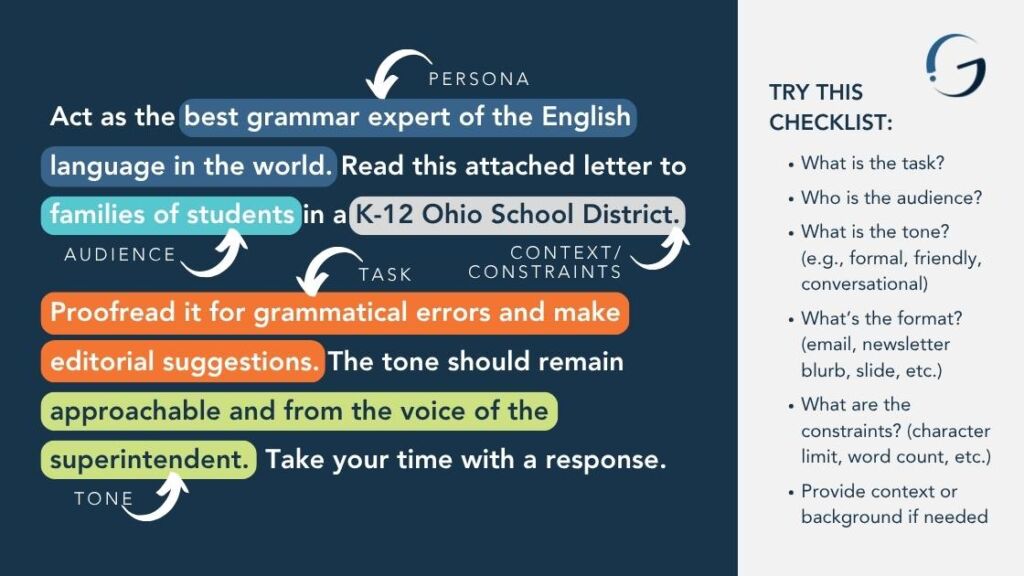Unlocking More Effective Communication Strategies with AI
Artificial intelligence (AI) is changing how we communicate, and it’s moving fast. What once felt futuristic is now part of our daily work, helping teams of all sizes connect more effectively.
At IGPR, we believe embracing AI isn’t about replacing people. It’s about using these tools to support effective communication strategies and more meaningful engagement. (In fact, the outline for this very blog started with an AI-generated draft, which we then adapted and refined to fit our goals and style.) AI is here to stay, and understanding how to use it thoughtfully can set your organization’s communication strategy apart.
Understanding AI in Communication
When we talk about AI in communication, we mean tools and platforms that help create, revise, analyze, or deliver messages. This might include programs that assist in drafting letters, newsletters, or reports; systems that help evaluate the tone and clarity of public communications; or tools like chatbots that can answer frequently asked questions from families, stakeholders, or community members.
Used thoughtfully, AI can support effective communication strategies that are consistent, timely, and professional across all channels. AI isn’t about taking the “human” out of messaging. It’s about enhancing what people already do best: connecting, storytelling, and responding with empathy.
Why AI Matters for Your Communication Strategy
The right AI tools can bring meaningful benefits to your communication efforts. By handling repetitive or time-consuming tasks, like early-stage drafting or compiling background research, AI can help you and your team work more efficiently and focus on higher-impact work.
Here’s a quick look at four tools to know:

Beyond efficiency, AI also supports data-informed decision-making by surfacing insights into audience behavior, engagement, and sentiment. It can scale with your organization, offering consistent support whether you’re a one-person team or managing communications across multiple departments.
When used intentionally, AI doesn’t make communication colder or more robotic. It actually frees up time and space for the work that needs a truly human touch: strategic thinking, relationship-building, and storytelling.
How to Start Incorporating AI
If you’re just beginning to explore AI in your communication work, start by identifying where you could use more support. Are there stages where drafting takes too long? Are small errors slipping through during busy stretches? These are great starting points for AI assistance.
Once you’ve pinpointed your needs, look for tools that align with both your goals and your workflow. Ease of use matters—platforms should feel intuitive so your team can adopt them with confidence. And don’t skip training. Helping your team understand how and when to use AI ensures it becomes a true support tool, not a source of confusion or inefficiency.
Prompting Tips That Work

Getting good results from AI starts with giving it clear, thoughtful instructions. Use this quick checklist to build better prompts:
- What’s the task?
- Who’s the audience?
- What’s the tone? (e.g., formal, friendly, conversational)
- What’s the format? (email, social post, slide, etc.)
- Are there any constraints? (character count, word limit)
- What background or context does the AI need?
Start small. Test AI in a few low-risk areas of your workflow. Learn what works. Then gradually expand its use as you and your team grow more comfortable and confident.
Ethical Considerations
As useful as AI is, it’s critical to use it responsibly. Data privacy should always be a priority. Many AI tools store or learn from the information you input, so it’s important never to feed sensitive or confidential information into these systems.
Maintaining a human voice is also essential. AI can suggest improvements or structure drafts, but your team’s judgment, creativity, and authenticity must guide the final message. Transparency matters, too. If AI has played a significant role in creating a piece of communication, consider sharing that openly. Trust is built on honesty.

AI is an aid to creativity and efficiency, but never as a replacement for thoughtful, effective communication strategies rooted in human experience.
Real-World Use at IGPR
We use AI daily in small but meaningful ways. When starting a project, we might ask an AI tool to generate a few brainstorming prompts. We often have AI scan our draft emails or press releases to suggest edits for clarity. And when creating a blog outline (like for this post), we might first generate a structure through AI, then refine and customize it based on our brand, voice, and client needs.
In every case, the final product is shaped by real people who understand the importance of voice, tone, and audience.
Moving Forward
The future of communication will be shaped by professionals who know how to use technology thoughtfully and responsibly. AI is one of many tools available, and when used well, it can make your messaging sharper, smarter, and more human.
If you’re not sure where to begin, start small:
- Try using ChatGPT to draft a social media post.
- Ask Gemini to refine a newsletter.
- Summarize a long document using Notebook LM.
- Explore a trending topic with Perplexity.
The goal isn’t to hand your voice over to a machine—it’s to use tools like AI to amplify your message and help your team do more of what they do best: communicate with clarity, empathy, and purpose. By doing so, you strengthen the foundation of your effective communication strategies with clarity, creativity, and purpose.




